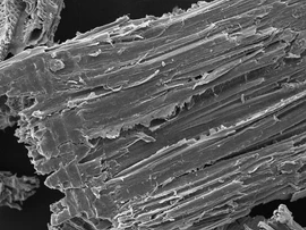Wood Characterization Using the iEM Platform

Wood is a natural green material with good physical and chemical properties such as high strength, low thermal conductivity, non-toxic and biodegradable. There are many applications of wood and wood materials, involving furniture, decoration, construction, and among many others. Moreover, as the most abundant organic polymer resource on the earth, wood has received more and more attention. Although we have been using wood for thousands of years, we still do not fully understand the shape or structural arrangement of wood, which is essential to realize its full potential. To achieve this, we offer a suite of advanced microscopy technologies, including transmission electron microscopy (TEM), confocal laser scanning microscopy (CLSM), and atomic force microscopy (AFM).
Wood—A Composite Comprising Many Chemical And Structural Components
Wood presents a composite hierarchical structure, containing features at all length scales, such as cellular structure, the microfibrils within the cell walls, and the molecular architecture of the cellulose, lignin, and hemicelluloses. Cellulose is one of the major polysaccharides in wood, accounting for 40-50% of the dry weight of the wood. Cellulose plays a reinforcing role in the composite structure of wood, associated with its high tensile strength and stiffness. Lignin acts as the cementing agent/matrix component of wood. While it is the least abundant polymer component in wood, the concentration of lignin is related to the higher stiffness and compressive strength of the wood materials. And hemicellulose is a binder of cellulose and lignin. The concentration of wood polymer fractions and their structural arrangement in the cell wall vary depending on the softwood and hardwood species. The composition of the cell wall is a response of the wood to the mechanical conditions and environment during its life cycle.
 Fig1. Schematic of the length scales of wood. (Toumpanaki, E., et al, 2021)
Fig1. Schematic of the length scales of wood. (Toumpanaki, E., et al, 2021)
Service Offering at the iEM Platform
TEM for wood and fiber research
TEM has a high resolution and can analyze wood fibers of about 0.2 nm. In combination with a package of 2D imaging, 3D tomography, and elemental analysis, TEM can be applied to provide valuable information on the sub-cellular structures of wood cells, the structures formed by microfibrils, the ultrastructural features of the wood cell walls, and the distribution of cell wall polymers.
CLSM for wood structure imaging and interactions
CLSM is a technology widely used in the study of natural materials, especially cellulosic materials. CLSM has been found a variety of uses in wood research. We can use this versatile technique to visualize two- and three-dimensional ultrastructure, measure cell dimensions, study cell wall polymer composition, evaluate aging and biodegradation, and examine fluid penetration effects, providing extensive information on natural and/or modified wood.
AFM for wood imaging and nanomechanics
AFM has been used as an important complement to EM for long-term studies of wood ultrastructure. AFM can modify the probe tip to image the ultrastructure of the wood cell wall. Besides imaging, the real advantage of AFM is that it can measure the properties (including mechanical, chemical, or thermal) of the cell wall, thus allowing a direct description of the underlying structure-property relationship.
Choose Creative Biostructure to Help You with Customized Wood Characterization
Investigation of wood and fiber cell wall ultrastructure.
Study of microfibril orientation and microfibril-forming structures in wood cell walls.
Distribution study of polymer components in wood.
Other additional information about the wood structure.
At the micrometer scale, wood behaves as a porous solid, and at the nanometer scale, its structure strongly influences the mechanical properties. Cellulose, hemicelluloses, and lignin are three main components that form wood and their deposition in the wood cell needs to be further investigated. The microstructural characterization of wood and its components can help to discover new functionalities and properties. If you are interested in our services, please don't hesitate to contact us.
Toumpanaki, E., et al. (2021). “Beyond what meets the eye: Imaging and imagining wood mechanical–structural properties.” Advanced Materials, 33(28), 2001613.

